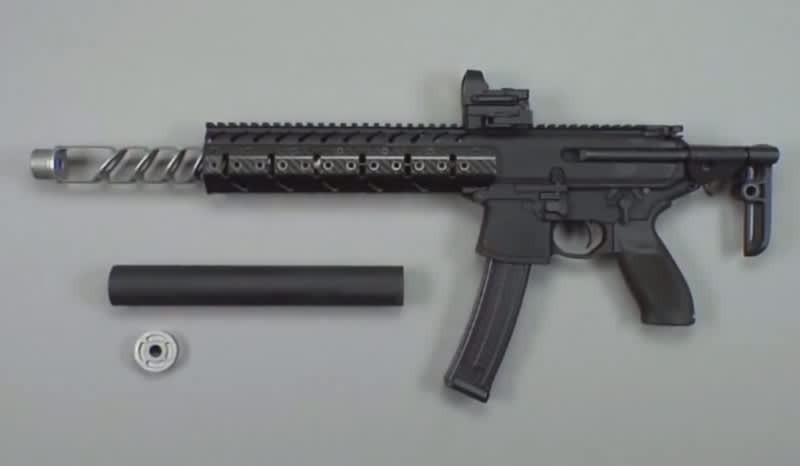Federal Judge Upholds ATF Classification of Muzzle Brake as Silencer
OutdoorHub Reporters 09.28.15

For months, gun maker Sig Sauer has been engaged in a court case against the Bureau of Alcohol, Tobacco, Firearms, and Explosives (ATF) over the classification of a muzzle brake for the Sig MPX-C carbine. According to the ATF, the muzzle brake has enough features to classify it as a suppressor, despite not fulfilling that role on its own. The agency claims that the muzzle brake can be readily transformed into a silencer with the addition of a specially designed shroud, which Sig Sauer marketed along with the gun. Last week New Hampshire District Judge Paul Barbadoro upheld the ATF’s classification and granted the agency its motion for summary judgement.
“The ATF’s classification of Sig Sauer’s device as a firearm silencer was not ‘arbitary, capricious… or otherwise not in accordance with law,'” Barbadoro wrote in his opinion.
Point by point, the federal judge broke down Sig Sauer’s complaints against the ATF and supported the agency in its findings. Although Barbadoro expressed doubt over the ATF’s argument back in July during a hearing, the judge wrote firmly in support of the agency in his opinion and refuted Sig Sauer’s claims that the ATF used “an incorrect legal standard in making its decision” or that the agency acted arbitrarily.
The case can be traced back to 2013, when Sig Sauer first introduced the MPX-C carbine. The firearm came with a permanently attached 9.5-inch muzzle brake on top of a 6.5-inch barrel.
“Unique to the Sig MPX-C carbine is the ability to convert the muzzle brake into a fully-functional suppressed model with the optional MPX-C silencer kit,” Sig Sauer stated in a trailer video for the firearm.
You can watch a video on the MPX-C below:
With the addition of a silencer tube and steel end plate, the muzzle brake acts as an internal baffle stack to reduce noise and muzzle flash, like other silencers currently on the market. Since the muzzle brake on its own did not function as a suppressor, Sig Sauer argued that the firearm did not fall under the National Firearms Act (NFA)—which deals with certain select-fire guns and accessories—like a traditional suppressor. The ATF disagreed.
“The ATF responded to Sig Sauer’s request by noting that the baffle core was a silencer component and concluding, without further explanation, that it qualified as a silencer under the NFA because it was a part intended only for use in a silencer,” Barbadoro reiterated.
Officials with the ATF argued that regardless of whether the muzzle brake reduces sound by itself, since it can be used as a component of silencer, it falls under the NFA. The ATF concluded that the muzzle brake was designed solely for inclusion within a silencer, and the fact that it can also be used as a muzzle brake does not mean it will be classified under that function.
“[The ATF] considered the relevant evidence using the correct legal standard and came to a rational conclusion based upon its expertise,” Barbadoro wrote. “No more is required to sustain its decision.”
Many gun owners and Second Amendment advocates say they are worried about the implications of the ATF’s classification, which some viewed as vague and easy to abuse. Nick Leghorn, a writer on the popular blog The Truth About Guns, wrote that the decision was worrying.
“A reasonable person would expect the ATF would judge an object based on what it is and how it functions, not based on how it could be used,” Leghorn argued.

